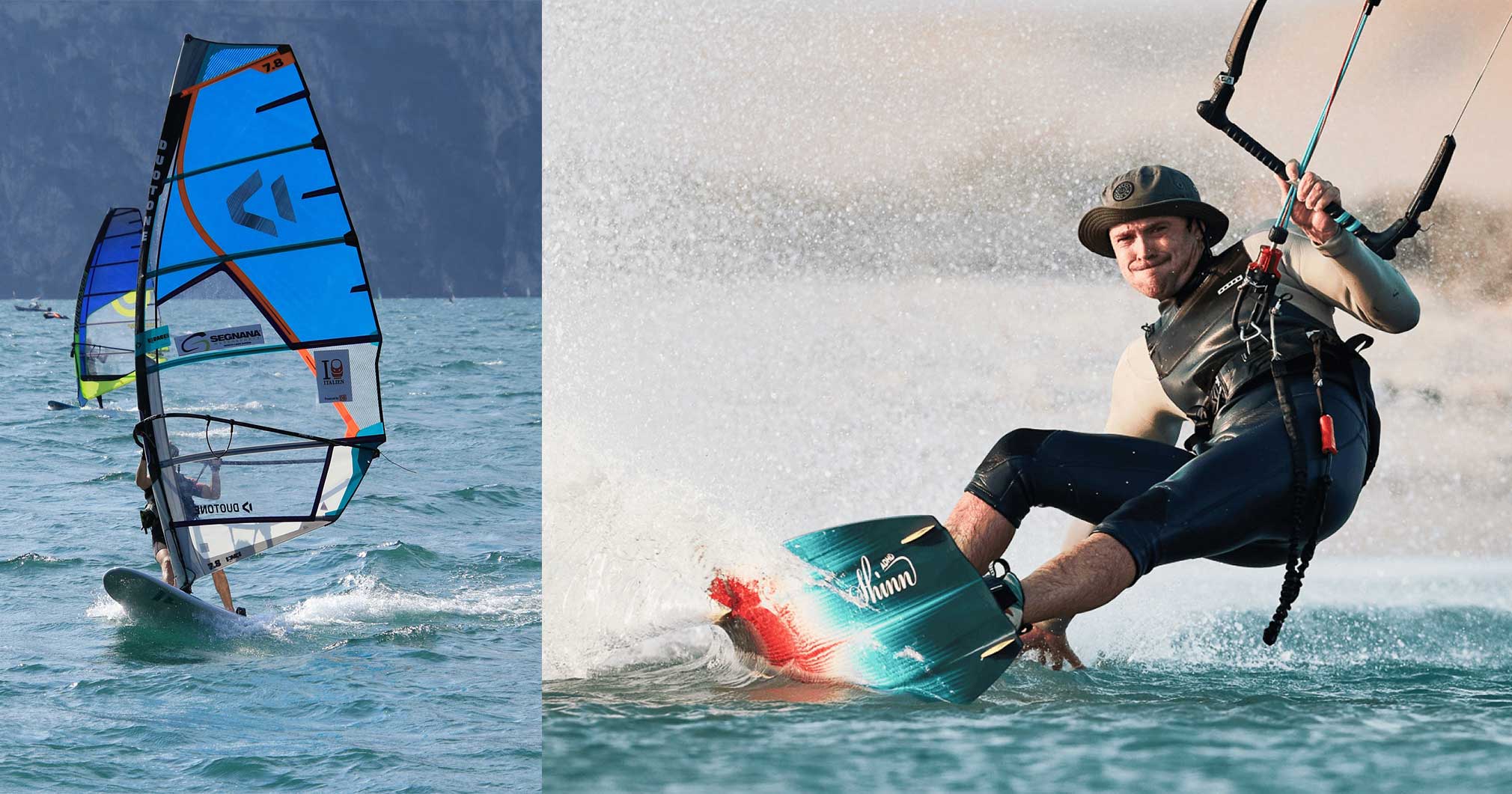Windsurfing and kitesurfing are both popular water sports. While they share some similarities, there are also some key differences between the two. Both sports can offer a relaxing and peaceful experience, as the sensation of gliding across the water while feeling the wind in your face can be quite exhilarating. However, kitesurfing is often considered to be more extreme and challenging, but with the correct kitesurfing equipment, safety precautions, wind speed and avoiding radical tricks, it can be a safe sport as well.
Windsurfing is a sport that has been around for decades. It involves standing on a board, usually around the size of a surfboard, and using a sail to catch the wind. The sail is attached to a mast, which is mounted on the board. The rider uses the sail to control the direction and speed of the board, much like a sailboat. To steer the board, the rider shifts their weight and tilts the sail. Windsurfing requires a fair amount of skill and technique to master, but it is considered a more traditional sport, and it requires a lot of practice and patience to master.
Kitesurfing, on the other hand, is a relatively new sport that has grown in popularity in recent years. It involves standing on a smaller board, similar to a wakeboard or a small surfboard, and using a large kite to catch the wind. The kite is controlled using a set of lines that are attached to the rider’s harness. The rider uses the kite to control the direction and speed of the board, much like a kite flying in the sky. To steer the board, the rider shifts their weight and moves the kite. Kitesurfing requires a good amount of skill and strength to master, but it is considered a more extreme sport.
When it comes to equipment, windsurfing requires a sail, mast, boom, and board. The sail is usually made of a lightweight and durable material such as Dacron, and it comes in various sizes and designs. The mast is usually made of carbon fiber or aluminum, and it is mounted on the board using a universal joint. The boom is used to control the sail, and it is attached to the mast using a gooseneck. The board is usually made of a lightweight and durable material such as epoxy or foam, and it comes in various sizes and shapes.
Kitesurfing, on the other hand, requires a kite, lines, control bar, and board. The kite is usually made of a lightweight and durable material such as ripstop nylon, and it comes in various sizes and designs. The lines are usually made of a strong and durable material such as dyneema, and they are attached to the kite using a set of pulleys. The control bar is used to control the kite, and it is attached to the lines. The board is usually made of a lightweight and durable wood laminated with glass or carbon fiber, and it comes in various sizes and shapes. Additionally, safety equipment such as a helmet and impact vest are recommended for kitesurfing.
When it comes to technique, windsurfing requires a fair amount of skill and technique to master. The rider needs to be able to balance on the board, control the sail, and steer the board. This requires a good amount of upper body strength, as well as good hand-eye coordination. The rider also needs to be able to read the wind and weather conditions, and adjust their technique accordingly.
Kitesurfing, on the other hand, also requires a good amount of skill and strength to master. The rider needs to be able to balance on the board, control the kite, and steer the board. This requires a good amount of upper body strength, as well as good hand-eye coordination. The rider also needs to be able to read the wind and weather conditions, and adjust their technique accordingly. Additionally, it’s essential to have a good understanding of kite safety, wind window and proper launching and landing techniques to have a safe experience.
Windsurfing VS Kitesurfing Speed
Both windsurfing and kitesurfing can be fast water sports, especially when the wind conditions are strong. The speed of either sport depends on the equipment used and the skill level of the rider. An experienced and skilled rider can maximize the speed potential of their equipment and ride more efficiently through the water. Even with the same equipment and wind conditions, a more skilled rider will generally be able to achieve higher speeds than a less experienced one. So, while equipment and wind conditions play an important role, the rider’s skill is also a significant factor in determining the speed of windsurfing and kitesurfing.
- Windsurfing top speed record: 103,67 km/h;
- Kitesurfing top speed record: 107,36 km/h.
Conclusion
Windsurfing and kitesurfing are both popular water sports that offer unique experiences. Both sports can be relaxing and peaceful, and both sports require skill, technique, and proper equipment. Windsurfing is considered a more traditional sport that is more accessible to beginners. Kitesurfing, on the other hand, is considered a more extreme sport that requires more skill and strength to master. However, with the correct equipment, safety precautions, wind speed and avoiding radical tricks, it can be a safe and enjoyable sport for all.
